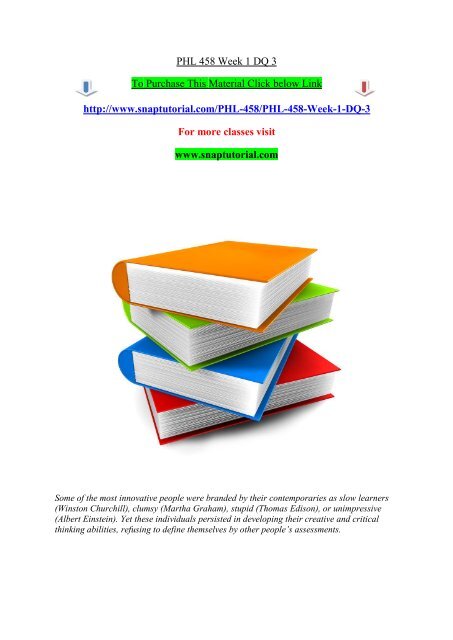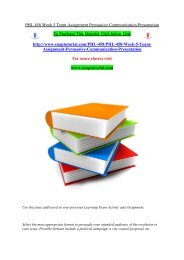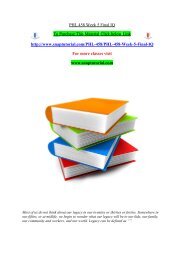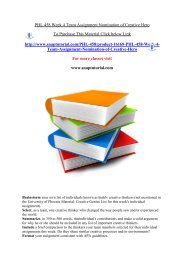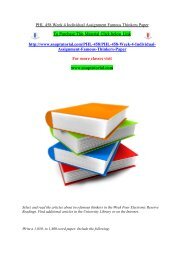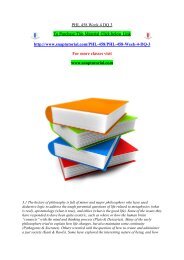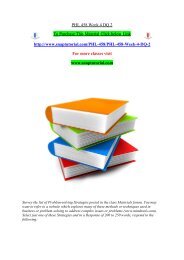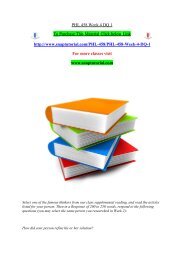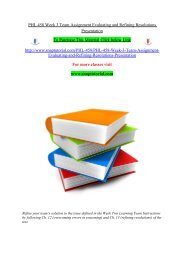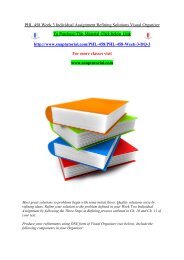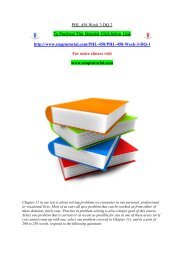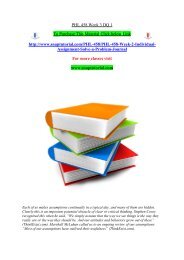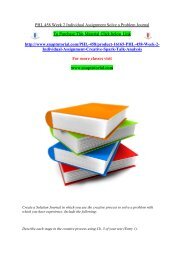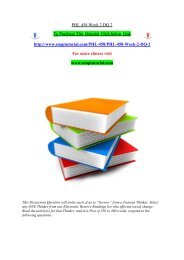PHL 458 Week 1 DQ 3
Some of the most innovative people were branded by their contemporaries as slow learners (Winston Churchill), clumsy (Martha Graham), stupid (Thomas Edison), or unimpressive (Albert Einstein). Yet these individuals persisted in developing their creative and critical thinking abilities, refusing to define themselves by other people’s assessments. That process of being exposed to society- home, neighborhood, church, school, and so on, is called acculturation. The author of our text encourages us to examine the values and beliefs we have assumed to be true: “Make your beliefs prove themselves, not on the basis of their familiarity or their compatibility with other ideas, but on their reasonableness in light of the evidence” (Ruggiero, 2009, p. 54). [Chapter 3: “Habits That Hinder Thinking”] The author goes on to define habits that hinder clear thinking, such as the “Mine-is-Better” habit, Face Saving, Resistance to Change, Conformity, Stereotyping, and Self-deception. With these hindrances in mind, respond to the following questions in a Post of 250-300 words: 3.1 Which of these habits do you observe most in other people in your daily life, and how does it impact you? 3.2 If you had to identify and deal with one of these habits in yourself, which would you target? How do you think this affects other people? 3.3 How might perception differ from reality in either case? Reference Ruggiero, V. R. (2009). The art of thinking: a guide to critical and creative thought (9th ed.). New York, NY: Longman Pearson, Publishers.
Some of the most innovative people were branded by their contemporaries as slow learners (Winston Churchill), clumsy (Martha Graham), stupid (Thomas Edison), or unimpressive (Albert Einstein). Yet these individuals persisted in developing their creative and critical thinking abilities, refusing to define themselves by other people’s assessments.
That process of being exposed to society- home, neighborhood, church, school, and so on, is called acculturation. The author of our text encourages us to examine the values and beliefs we have assumed to be true: “Make your beliefs prove themselves, not on the basis of their familiarity or their compatibility with other ideas, but on their reasonableness in light of the evidence” (Ruggiero, 2009, p. 54). [Chapter 3: “Habits That Hinder Thinking”]
The author goes on to define habits that hinder clear thinking, such as the “Mine-is-Better” habit, Face Saving, Resistance to Change, Conformity, Stereotyping, and Self-deception. With these hindrances in mind, respond to the following questions in a Post of 250-300 words:
3.1 Which of these habits do you observe most in other people in your daily life, and how does it impact you?
3.2 If you had to identify and deal with one of these habits in yourself, which would you target? How do you think this affects other people?
3.3 How might perception differ from reality in either case?
Reference
Ruggiero, V. R. (2009). The art of thinking: a guide to critical and creative thought (9th ed.). New York, NY: Longman Pearson, Publishers.
Create successful ePaper yourself
Turn your PDF publications into a flip-book with our unique Google optimized e-Paper software.
<strong>PHL</strong> <strong>458</strong> <strong>Week</strong> 1 <strong>DQ</strong> 3<br />
To Purchase This Material Click below Link<br />
http://www.snaptutorial.com/<strong>PHL</strong>-<strong>458</strong>/<strong>PHL</strong>-<strong>458</strong>-<strong>Week</strong>-1-<strong>DQ</strong>-3<br />
For more classes visit<br />
www.snaptutorial.com<br />
Some of the most innovative people were branded by their contemporaries as slow learners<br />
(Winston Churchill), clumsy (Martha Graham), stupid (Thomas Edison), or unimpressive<br />
(Albert Einstein). Yet these individuals persisted in developing their creative and critical<br />
thinking abilities, refusing to define themselves by other people’s assessments.
That process of being exposed to society- home, neighborhood, church, school, and so on, is<br />
called acculturation. The author of our text encourages us to examine the values and beliefs<br />
we have assumed to be true: “Make your beliefs prove themselves, not on the basis of their<br />
familiarity or their compatibility with other ideas, but on their reasonableness in light of the<br />
evidence” (Ruggiero, 2009, p. 54). [Chapter 3: “Habits That Hinder Thinking”]<br />
The author goes on to define habits that hinder clear thinking, such as the “Mine-is-Better”<br />
habit, Face Saving, Resistance to Change, Conformity, Stereotyping, and Self-deception.<br />
With these hindrances in mind, respond to the following questions in a Post of 250-300 words:<br />
3.1 Which of these habits do you observe most in other people in your daily life, and how<br />
does it impact you?<br />
3.2 If you had to identify and deal with one of these habits in yourself, which would you<br />
target? How do you think this affects other people?<br />
3.3 How might perception differ from reality in either case?<br />
Reference<br />
Ruggiero, V. R. (2009). The art of thinking: a guide to critical and creative thought (9th ed.).<br />
New York, NY: Longman Pearson, Publishers.


